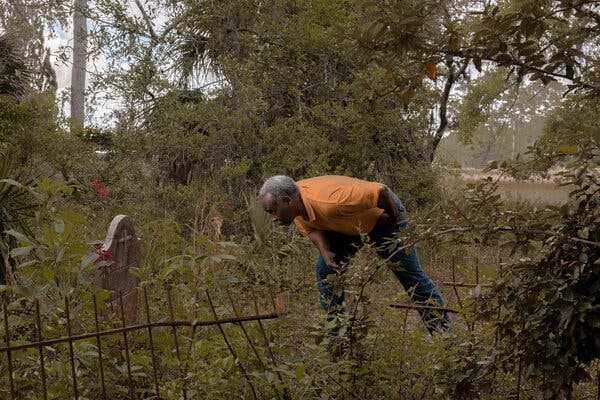A quest to find living descendants of 36 enslaved people has transformed into a project that gives Black residents new clues to their ancestry, wherever it may lead.
By Caroline Gutman and Emily Cochrane
Photographs by Caroline Gutman
Reporting from Charleston, S.C.
April 11, 2024
When Edward Lee heard about a project collecting DNA from Black residents like him in Charleston, S.C., he had reason to be skeptical. Knowing that African Americans have been exploited before financially and in medical experiments, he feared that handing over his genetic identity could leave him vulnerable.
But he knew the people behind the Anson Street African Burial Ground Project, having worked with many of them before on similar efforts to preserve the region’s Black history.
And they came to him with a unique proposal: With DNA extracted from 36 enslaved people whose bones had been unearthed by a construction crew downtown, researchers were now searching for their living descendants.
Even if he wasn’t related to any of them, Mr. Lee figured, maybe a DNA test could still provide other answers that had eluded him. He could trace his ancestry to a great-great-grandmother on one side, but no further. So last spring, he sat still as a researcher gently swabbed the inside of his cheek.
“I had to have guarantees that we control the results — that’s the only reason I did it,” Mr. Lee said.
Image

Edward Lee in Scanlonville Cemetery, also known as Remley Point Cemetery. To show that area was a burial site, crosses were placed over graves.
We are having trouble retrieving the article content.
Please enable JavaScript in your browser settings.
Thank you for your patience while we verify access. If you are in Reader mode please exit and log into your Times account, or subscribe for all of The Times.
Thank you for your patience while we verify access.
Already a subscriber? Log in.
Want all of The Times? Subscribe.
SKIP ADVERTISEMENT
Source: nytimes.com



